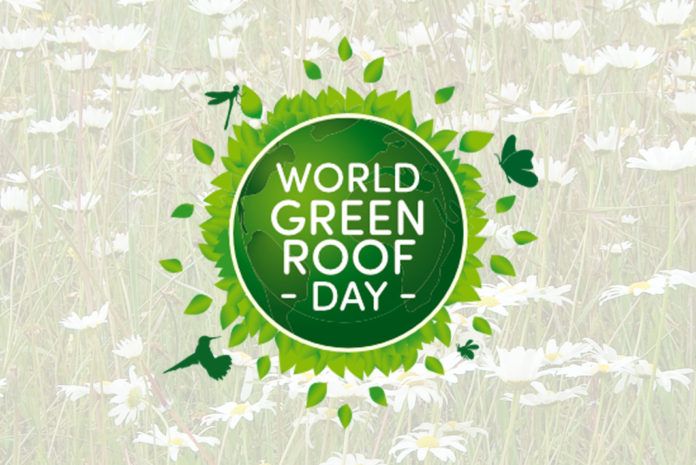Small roof spaces – from bike sheds to bus stops, kitchen extensions to home offices – make perfect homes for beautiful green roofs, and industry experts supporting this year’s World Green Roof Day on 6 June, 2020, are encouraging everyone to look out of their windows and identify flat roofs ripe for transformation.
Green roofs large and small are proven to provide practical benefits, including improving air quality, cooling urban environments, managing heavy rainfall, insulating buildings and even boosting the mental wellbeing of those looking out on to them.
And that’s in addition to the many species of birds and insects that intensive and extensive green roofs support. For many, this is most notably pollinators; a study of green roofs in London recorded more than 20 species of bee foraging on them.
World Green Roof Day (WGRD), the brainchild of Chris Bridgman from Bridgman & Bridgman, is being delivered by London-based green roof expert Dusty Gedge. He said: “By celebrating green roofs and the environmental benefits they provide, we hope that cities across the globe, in all continents and climate zones, see the value of greening roofs and act to ensure their uptake. WGRD allows us to celebrate green roofs and the benefits they bring to people and nature.”
WGRD will also see the formal launch of the Green Roof Organisation (GRO), a UK trade body responsible for the green roof code of practice and now a legal entity. Dusty, a founding member who sits on the GRO board, added: “We hope that companies and organisations involved in green roofs in the UK who haven’t joined GRO as yet, do so. We can lobby to ensure that green roofs become mainstream across the whole of the UK.”
GRO member Wallbarn, a manufacturer of modular green roof solutions, is supporting WGRD, as director Julian Thurbin explained: “The event is a great opportunity to sing the praises of green roofs and raise awareness of their many environmental benefits. And it is perfect timing given that wildflower and sedum roofs are now starting to bloom, attracting pollinators such as bees and butterflies and a whole host of other bugs. They provide beautiful, vibrant, natural habitats equally suited to large and small roof areas.”
Julian continued: “Almost any flat roof can be greened. Installation has been made easier and we should be thinking of both small roof spaces, as well as large masterplans, as targets for green roofs. Given the ease with which you can convert an unloved flat roof into a mini wildlife haven, it makes total sense to identify roofs around the country for greening. If just a percentage of the millions of square metres of roof space was converted into a living roof it would have a major impact.”
You can post pictures of flat roofs that would make perfect green roofs (or already completed inspiring green roofs) on social media to #WGRD2020.
WGRD is supported by greenroofs.com, livingroofs.org, the European Federation Green Roofs and Walls, International Federation of Landscape Architects (IFLA), Europe Green Roofs for Healthy Cities (GRHC) and World Green Roof Infrastructure Network (WGIN).
https://worldgreenroofday.com/




